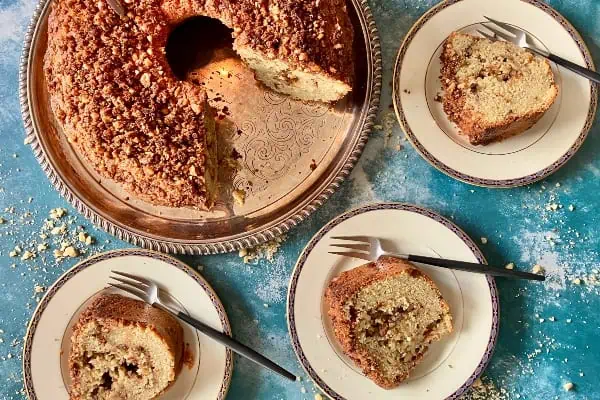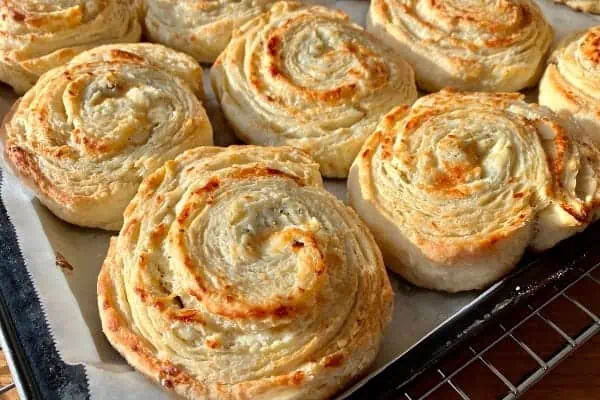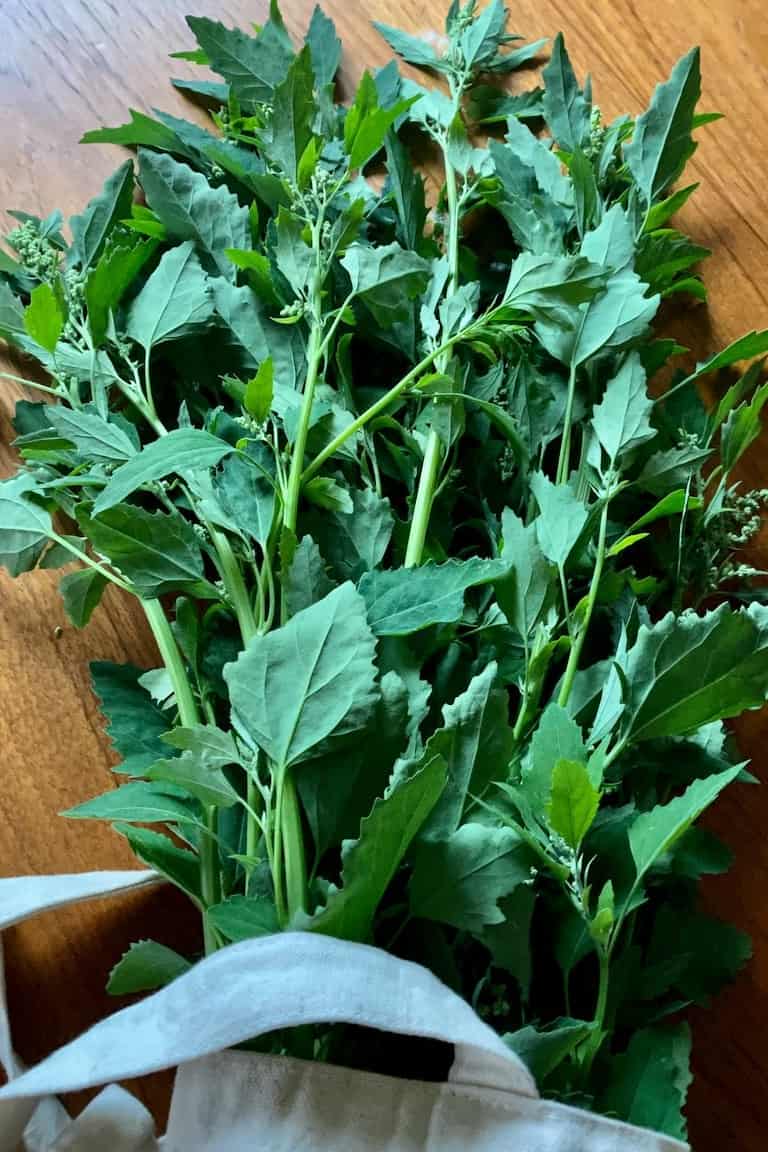
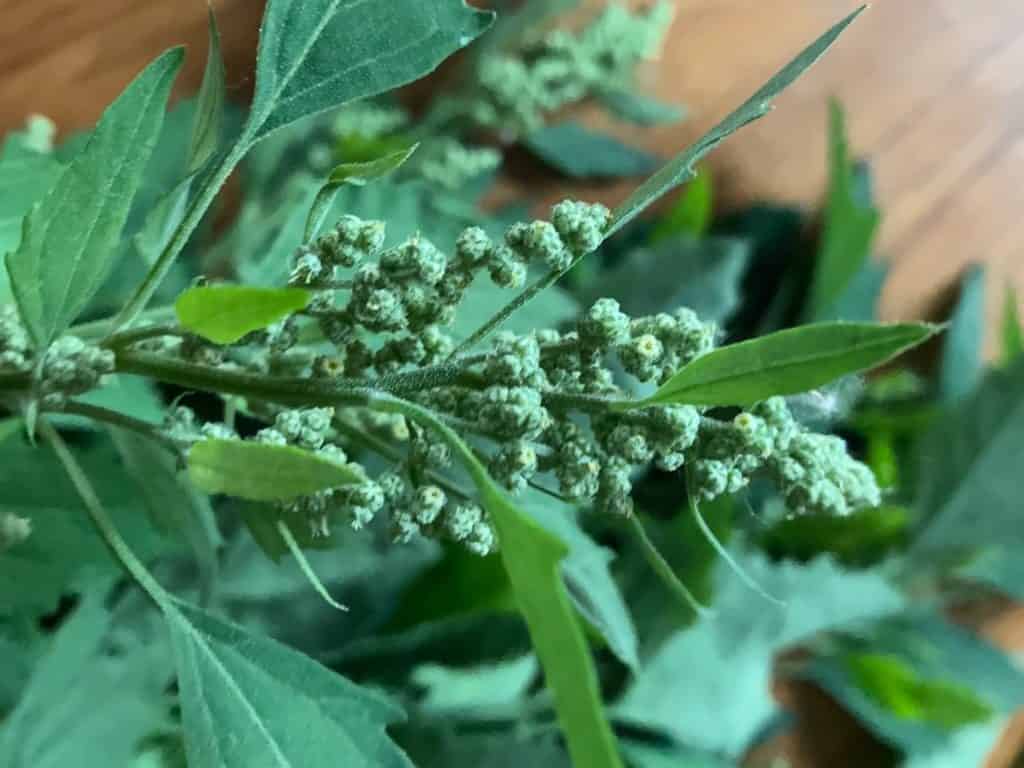
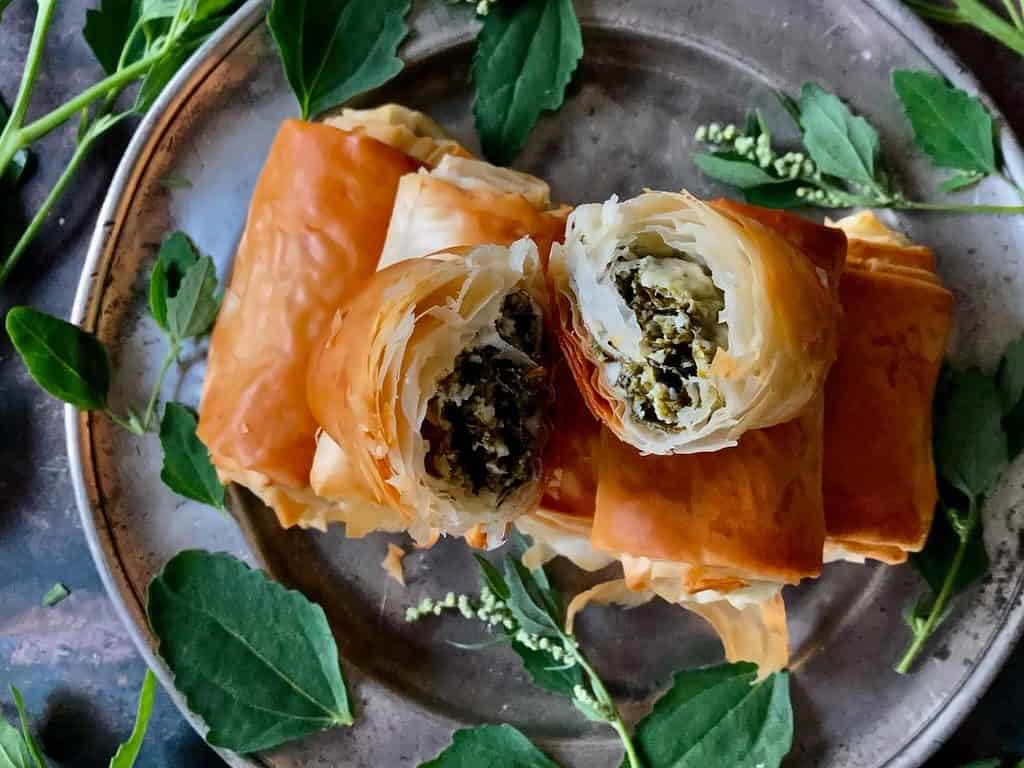
There are few wild greens easier to enjoy than lamb’s quarters (Chenopodium album) also known as white goosefoot and, sometimes, pigweed. A member of the populous Amaranthaceae family, which includes amaranth, quinoa, beets and spinach, among thousands of other plants, the leaves can be eaten fresh or cooked and have a flavour somewhere between spinach and kale.
The animal nomenclature derives from the leaves’ shape, like a goose foot (and because pigs like it; though too much of the plants’ oxalic acid can be bad for them), and from an ancient English festival known as Lammas, when a loaf of bread made with the first harvested grain of the season was consecrated, and lamb’s quarters were part of the feast.
Like dandelions, lamb’s quarters are opportunists. They show up in disturbed ground, empty flowerpots, ditches, or at the edges of forests or fields. You’ve probably noticed them—shield-like, forest-green leaves, with raggedy edges, growing on stalks topped by lacey towers of green seeds.
Those seeds can be ground into flour or cooked like quinoa, but they are difficult to hull. Forager-chef Hank Shaw suggests the easier method of throwing seed heads into soups and stir fries, as though they were broccoli. The young stalks are juicy, but turn woody as they get older, so later in the season focus on the leaves and the seeds and leave the stalks for the compost.
Follow the usual precautions when harvesting—take a knowledgeable friend or a field guide with you to make sure you’re properly identifying the plant; be aware of any allergies you might have, and eat sparingly if it’s your first time. Once you’re comfortable, try out this traditional Greek recipe, typically made with the wild greens that show up after the first rains of October.
Spinach-Cheese Pies (Spanakotiropita), With Lamb’s Quarters Greens
(Two pies make a substantial appetizer; and three, a light lunch or supper when served with Greek salad and roasted garlicky potatoes.)
If you can’t find lamb’s quarters, try chopped spinach, kale or chard.
Ingredients
1/4 lb (4 oz) lamb’s quarter leaves (4 cups, packed)
2 green onions, both white and green parts, finely chopped.
1/2 bunch of dill, finely chopped
1/2 tsp salt
1/2 tsp black pepper
2 Tbsp olive oil
1 egg, beaten
8 oz feta cheese, crumbled
6 oz (3/4 cup) unsalted butter
1 package (16 sheets) phyllo pastry, defrosted overnight in the fridge
Instructions
- Wash lamb’s quarters thoroughly. Strip the leaves from the stalks and break the older, larger leaves from their tough stems. Reserve the seedy tops for vegetable stir-fries or as an addition to soups or stews.
- Coarsely chop the leaves and place in a bowl. Add the chopped green onion and dill. Toss with olive oil and salt and pepper.
- Add crumbled feta cheese to the bowl and mix well. Stir in beaten egg until thoroughly combined.
- Remove the phyllo pastry from the package and unfold carefully onto a counter. Cover with a tea towel so the phyllo sheets don’t dry out.
- Melt butter in a small bowl in the microwave and have a pastry brush handy. Carefully unpeel the first rectangle of pastry from the pile and lay it on the counter, with the short side closest to you. Brush with butter so that it’s completely covered.
- Peel the second sheet from the pile, lay it on top of the first, brush with butter and repeat with a third sheet, covering the remaining phyllo with a tea towel every time. If the sheets are cracked or torn, try to turn and layer them so the cracks are not in the same place, always keeping the short side of the rectangle closest to you. Don’t worry too much about cracks or gaps; the butter and the rolling of the phyllo into log-like packages will take care of any imperfections.
- Cut the stacked, buttered sheets lengthwise into three even pieces with a sharp knife or pizza cutter.
- Place two tablespoons of filling about an inch from the base of each long piece. Fold the sides of the pastry over the filling (about one-half inch on either side) and continue the fold for the whole length of the piece.
- Fold the bottom inch over the filling and roll it over so the filling is completely covered. Continue rolling, poking the ends in as necessary, until you’ve reached the top end and you have a small log. Repeat until you have three logs.
- Seal the seam of each log with a brush of butter, brush the remaining surface and place seam-side down on a parchment-lined baking sheet.
- Repeat until you have used up all of the filling and all of the phyllo sheets. You will be left with just two sheets for your last three logs. Don’t worry, it’s plenty!
- Bake in a preheated 400℉ oven until golden brown, about 20 minutes. Serve warm or at room temperature.
- To freeze, place uncooked logs on a baking sheet in the freezer for about four hours. Store in a covered container. Cook directly from the freezer for 20–25 minutes, until golden.
Makes 18 3-inch by 2-inch pies.


